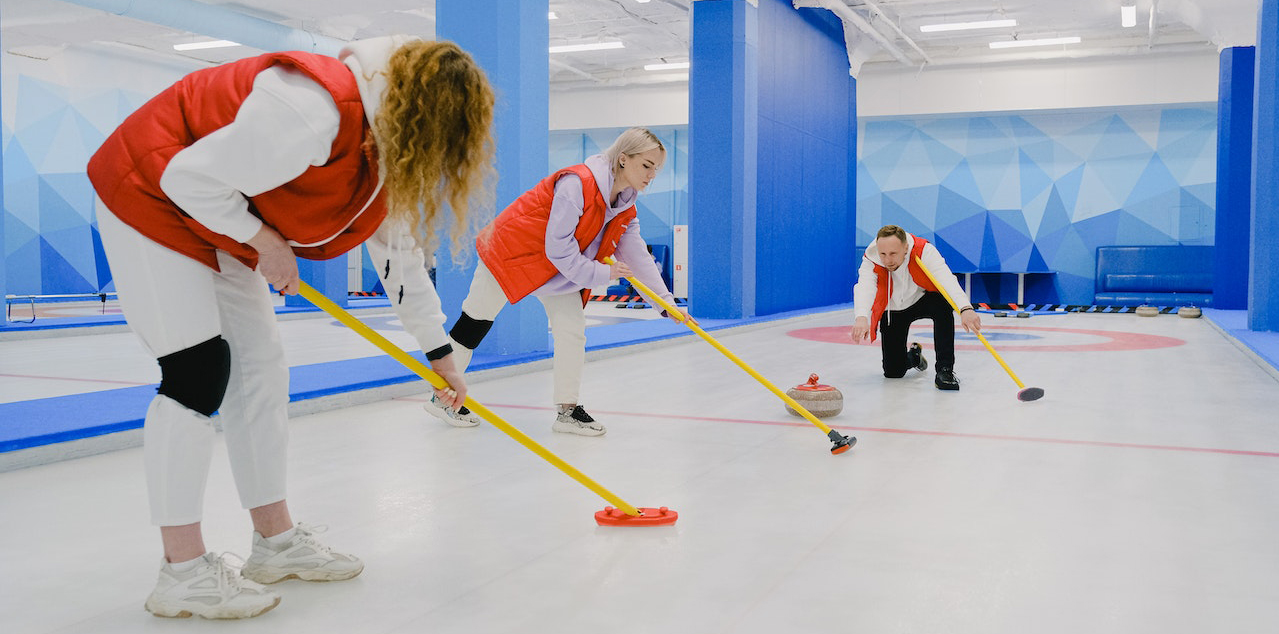Curling requires accuracy, planning, and collaboration on the ice. It involves the Stone, Ice Surface, House, and Broom. Success comes from mastering the Curling Delivery, where the stone is pushed toward the house. Precision delivery involves the Hack Position, Grip, Slide, Release, and Sweeping Strategies.
Intelligent decision-making is crucial for success, with techniques like Positioning, Takeouts, and Stealing Points playing important roles. Each team member has specific tasks and responsibilities to ensure success. Novices benefit from wise positioning and defending key areas. Competitive bouts demand mental toughness and self-confidence.
Curling championships require joining a club or league and competing in regional competitions. Consistent practice, determination, and strong local competitors can lead to victories. Curling combines strategy, accuracy, and collaboration, and success comes with practice and enthusiasm.
Curling stones are meticulously made to meet specified specifications. The process includes selecting high-quality granite, quarrying, shaping, turning, boring the hole, making the handle, quality testing, and polishing the stones. Some stones have intricate carvings and inscriptions, adding to the sport’s appeal. Skilled craftsmen typically manufacture these stones in granite-rich areas.
Ailsa Craig, Scotland, provides the most popular granite for curling stones due to its distinctive qualities. Initially, curling stones were made from Ailsa Craig granite in the 18th century, but other sources are used today. Granite from different regions or imported materials may be used by international curling stone makers.
The longevity of curling stones depends on their quality, frequency of use, and maintenance. Durable stones like Ailsa Craig granite last longer than cheaper alternatives. Proper cleaning, polishing, avoiding rough surfaces, storage, and expert maintenance contribute to a stone’s longevity. Resurfacing can also extend their lifespan. Although rare, curling stones can shatter due to material quality, usage frequency, and playing conditions. Regular maintenance and addressing signs of wear and corrosion minimize the risk of fractures.
Curling is a captivating sport that demands precision, strategy, and collaboration on the ice. With its rich history dating back centuries, the game has evolved into an internationally recognized sport, attracting participants from all walks of life. Success in curling hinges on intelligent decision-making, skillful delivery, and adept sweeping strategies.
The sport’s techniques, such as positioning, takeouts, and stealing points, require constant practice and determination to master. Each team member’s roles and responsibilities are vital in achieving victory, and novices can benefit from understanding the strategic aspects of the game.
Curling stones, meticulously crafted from high-quality granite, play a crucial role in the sport. The distinctive qualities of Ailsa Craig granite from Scotland make it the preferred material for many curling stones. Proper maintenance and care can extend the longevity of these stones, ensuring their precision and reliability on the ice.
As curling continues to gain popularity worldwide, participating in club or league competitions and regional tournaments paves the way to championships. The combination of accuracy, planning, and collaboration makes curling an exciting and challenging winter sport.
In summary, curling embodies the spirit of teamwork, skill, and dedication, making it a beloved activity for players and spectators alike. With its unique blend of strategy and camaraderie, curling remains an enduring and cherished tradition in the world of winter sports. Whether played by amateurs or seasoned professionals, curling’s timeless appeal continues to bring joy and excitement to the ice, captivating hearts across the globe.
Rules for Olympic Curling:
Curling is a captivating winter sport that has been a part of the Olympic Games since 1924. The rules for Olympic curling are governed by the World Curling Federation (WCF) and the International Olympic Committee (IOC). Here’s an overview of the essential rules for Olympic curling:
Teams and Players
- Team Composition: Each team consists of four players: the lead, second, vice-skip (third), and skip (captain). The skip is responsible for calling the shots and strategy.
- Alternating Shots: Players take turns delivering stones, with the lead and second players typically throwing the first five stones, and the vice-skip and skip delivering the last two stones (known as the “skips’ stones”).
The Playing Field
- The Sheet: Curling is played on a rectangular ice surface known as the “sheet.” The sheet is 146 to 150 feet (44.5 to 45.7 meters) in length and 14.2 to 15.7 feet (4.35 to 4.8 meters) wide.
- The House: At each end of the sheet, there is a target area called the “house,” consisting of concentric circles. The innermost circle is known as the “button.”
Game Structure
- Ends: A curling game is divided into a series of “ends.” In Olympic curling, each game consists of ten ends, unless tied, in which case extra ends are played to determine the winner.
- Scoring: After each end, the team with one or more stones closest to the button scores points. Each stone within the house is worth one point.
Delivery and Sweeping
- The Hack: Players deliver the stone from a starting position called the “hack.”
- Sweeping: Teammates may sweep the ice in front of the moving stone to influence its speed and direction.
Free Guard Zone Rule
- Free Guard Zone (FGZ): During the first four throws of each end (the lead’s and second’s shots), the stones cannot be removed from play by the opposing team, except for stones that leave the playing area.
Scoring
- Counting the Score: The team with the most stones closest to the button within the house at the end of each end scores the corresponding number of points.
- Hammer: The team with the last stone of the end, known as the “hammer,” has a strategic advantage, as they have the opportunity to control the final shot.
Time Limits and Tiebreakers
- Time Limits: Each team has a designated amount of time to complete their shots during the game.
- Tiebreakers: If the score is tied at the end of the tenth end, extra ends are played until a winner is determined.

